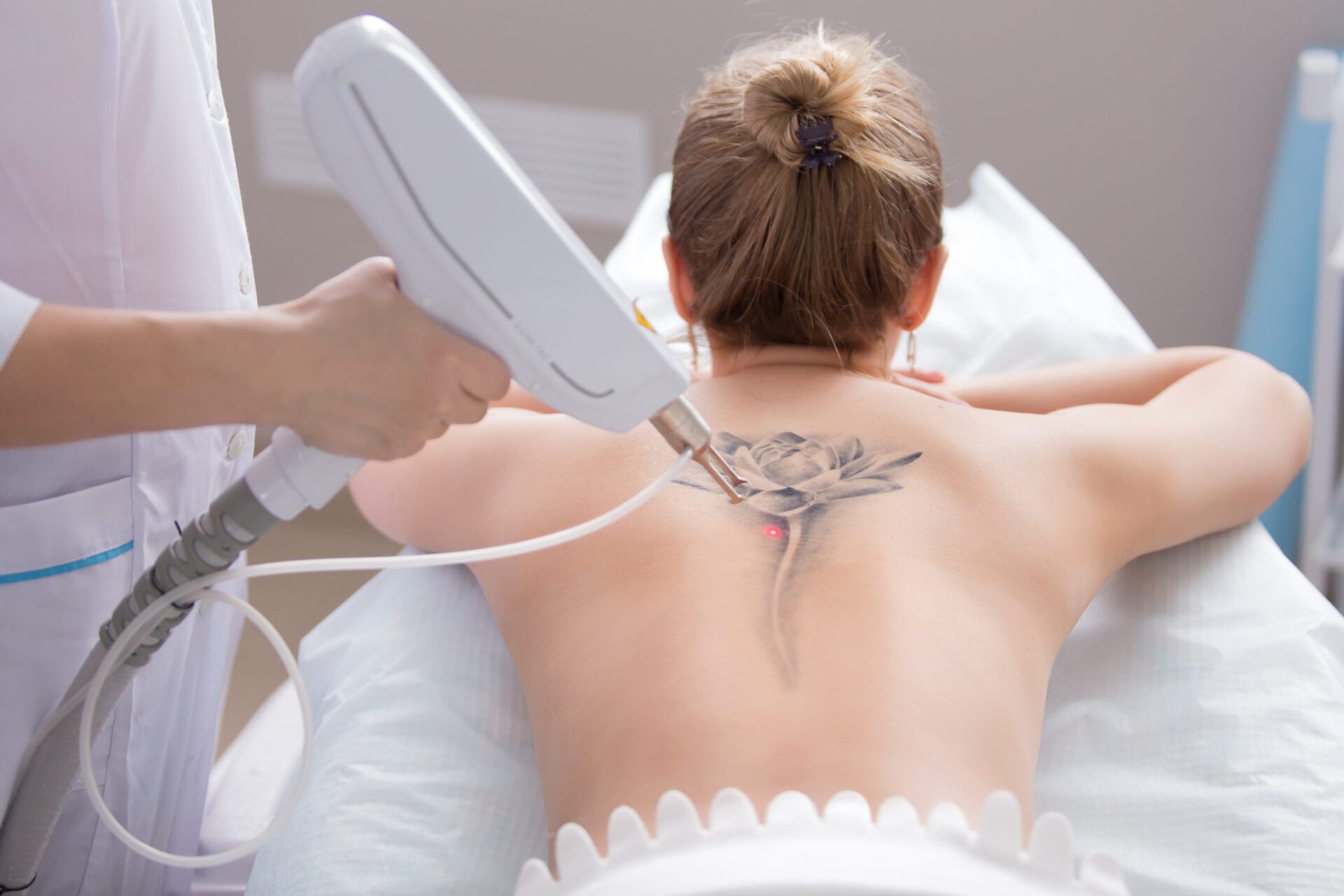Today we will discuss in detail all the factors involved in the number of sessions required for tattoo removal. This will depend on several factors that we will discuss below.
1. Type of Laser Used For The Removal

Not all lasers are used to erase tattoos, and not all ND-YAG lasers are equally effective. The best, the most advanced Q-Swchited Nd-Yag laser:
- Leaves no wound, scab or mark
- Reaches the deepest inks on the skin
- Allows you to remove red, green, yellow, and blue inks.
- Eliminates ink remnants located in scars.
2. Area Where The Tattoo Is Located

The removal of the ink particles from the tattoo (which has broken the impact of the laser wave) is carried out by the lymphatic route. Therefore, depending on where the tattoo is located and therefore the type of lymphatic in the area, the removal of the ink will be more or less fast:
- Areas further from the trunk such as fingers or toes: The lymphatic circulation is more compromised and the removal of the tattoo will be slower.
- Areas closest to the trunk such as shoulder, thigh, etc. The removal of the tattoo will be faster by having a better lymphatic system.
3. Color Of The Tattoo

To break a certain color of ink we are going to need a specific laser wavelength.
Not only do we use the latest generation ND-YAG laser, we also have specific heads to treat each and every color that a tattoo can have, thus guaranteeing the optimal removal of the entire tattoo.
However, despite using its specific wavelength, each color is more or less resistant to the shock wave emitted by the laser, thereby conditioning the number of sessions that a tattoo may need for its complete removal.
- Black color: It responds better to the energy wave, the one that needs the fewest sessions for its elimination.

- Red color: Of the colors, it is the one that responds best to the energy wave. It needs more sessions than black but less than the other colors for its elimination.

- Green / yellow color: Responds worse than red to energy impact, but is not the worst of colors. It needs more sessions than the red color for its elimination.

- Blue / white color : It is the color that responds the worst to energy impact. It needs more sessions than any other color for its removal.

4. Ink Used: Composition, Density and Depth
It is logical to think that depending on the amount of ink that a tattoo like this may have, it will need more or fewer sessions for its total elimination, regardless of the type of laser with which it is treated:
- The more ink you have in a tattoo, the more sessions you will need to completely remove it: If the tattoo has been reworked, it has more ink than the original and will need more sessions.
If it is a “Cover”, a tattoo that covers another, to remove all the ink you will need more sessions. The “Tribal” tattoos are very dense and with a lot of ink. Tattoos with shadows or smudges are less dense.

- The less amount of pigment a tattoo has, the fewer sessions will have to be done to remove it: Those made with shading techniques such as portraits, landscapes, etc. they are low on ink and will need fewer sessions.
5. Age Of The Tattoo
The age of a tattoo plays in favor of the speed of removal. The longer you have a tattoo, the older the ink will be, the more degraded and therefore easier to break, so it will take fewer sessions to remove it.Influence of the age of the tattoo on the number of sessions:
- 1 to 3 years: Recent, will not respond as easily to laser.
- From 3 to 5 years: Something old, will require a session less.
- More than 5 years: Old, you will need 2 or 3 sessions less.
- More than 10 years: Very old, responds very quickly to laser.
6. How To Care For Your Tattoo?
This is a fundamental part of the removal of a tattoo, not only so that it is completely erased without marks or scars but, most importantly, so that no skin infection occurs.
Some of the most important tips are:
- Let the tattoo dry as much as possible (keep the area in the air)
- Wash with water and neutral soap and dry with a personal towel
- Hydrate daily with a specific cream
- Do not pick scabs or blisters
- Avoid beaches, swimming pools, saunas and contact of the area with animals until it has healed
- Avoid exposing the area to the sun for at least the first 15 days.






GIPHY App Key not set. Please check settings